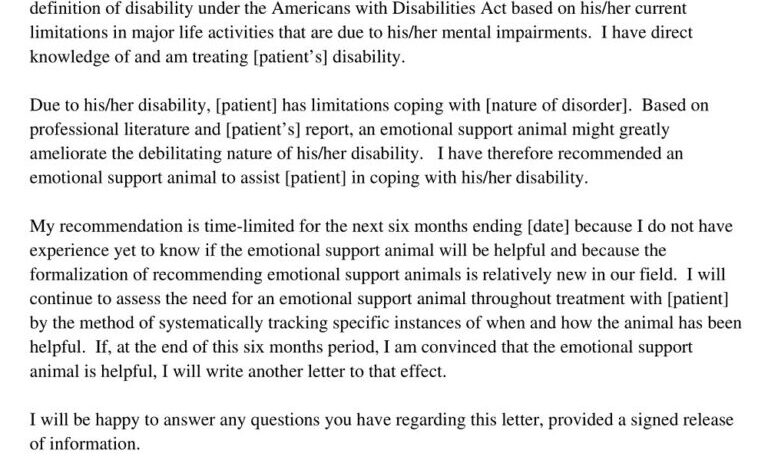
Letter to my office mental health: navigating the complexities of workplace well-being. This exploration delves into the delicate balance between personal struggles and professional responsibilities, offering a framework for expressing mental health concerns within the office environment. From understanding the nuances of different approaches to the legal and ethical considerations, we’ll cover everything to help you approach this conversation constructively and effectively.
This isn’t just about writing a letter; it’s about fostering open communication and seeking support. It’s about empowering yourself to prioritize your well-being while maintaining a productive and healthy work environment. By understanding the context, content, and potential challenges, you can navigate this sensitive topic with confidence and clarity.
Understanding the Context

A “letter to my office mental health” is a personal communication addressed to the mental health resources available within a workplace. It’s a tool for expressing concerns, seeking support, and outlining the need for assistance related to emotional or psychological well-being. This letter is often written in a confidential setting, though it might be addressed to a specific department, mental health professional, or HR representative within the organization.This letter isn’t simply a complaint; it’s a proactive step towards acknowledging and addressing personal struggles.
It aims to initiate a dialogue, fostering a supportive environment within the workplace and potentially leading to necessary interventions and resources. The tone should be sincere, respectful, and focused on seeking help rather than placing blame.
Perspectives on Writing the Letter
Individuals might write such a letter for various reasons. Some might be experiencing significant stress or anxiety related to work pressures, while others might be grappling with personal issues that are impacting their professional performance. Personal challenges such as grief, relationship problems, or health concerns can all contribute to the need for workplace support. Furthermore, workplace conflicts, bullying, or a lack of work-life balance can also be motivating factors.
This is a critical step in taking control of one’s well-being.
Emotional and Psychological Factors
Composing such a letter can be a deeply emotional and psychologically challenging process. The act of acknowledging personal struggles and vulnerability can evoke a range of feelings, from anxiety and fear to relief and hope. Addressing these feelings is crucial. The writer might be uncertain about the response they’ll receive or the impact their letter will have.
However, it’s a sign of strength and a desire for positive change. This act of self-reflection and reaching out is a vital part of the process.
Motivations Behind Seeking Workplace Support
There are various motivations behind seeking support from the workplace. Employees might feel that their workplace provides a safe and confidential space for expressing concerns. A supportive workplace culture, a sense of community, and a history of positive interactions with HR or mental health services can be key motivators. They may also perceive a lack of support from other sources, such as family or friends.
Seeking support at work could be seen as a proactive way to maintain well-being and performance.
I’ve been working on a letter to my office about mental health, and it’s been a real brain-teaser. Knowing that new brain cells continue to form even as you age ( new brain cells continue to form even as you age ) is a powerful reminder that our brains are dynamic and adaptable. It’s encouraging to think this resilience can extend to our work environment too, making it easier to tackle challenges and stress.
Structures of the Letter
A letter to office mental health can take various forms. A straightforward approach might include a brief introduction, a clear description of the challenges being faced, and a request for specific assistance or resources. It’s essential to be specific about the issues and the desired outcomes. A structured approach can include details about the impact of the challenges on work performance and well-being.
Addressing Potential Concerns
Seeking workplace support can raise concerns about confidentiality, potential repercussions, or a perception of weakness. It’s crucial to address these potential concerns proactively. A supportive and understanding workplace should assure employees of confidentiality and support. This will make it easier to seek support. It’s important to remember that seeking help is a sign of strength, not weakness.
Content of the Letter
Addressing mental health concerns in the workplace requires a delicate balance of honesty, clarity, and confidentiality. This letter should be a tool for expressing your struggles and requesting the support you need without jeopardizing your professional standing. It’s crucial to frame your concerns within the context of your work and how they impact your ability to perform effectively.
Letter Framework
A well-structured letter will enhance your communication and ensure your concerns are addressed thoughtfully. The letter should begin with a clear introduction, followed by a detailed explanation of your situation, and conclude with a request for specific support and accommodations. This framework facilitates a productive dialogue between you and your workplace mental health resources.
Components of the Letter
A comprehensive letter should include several key elements. These components will help paint a clear picture of your situation and the impact your mental health struggles have on your work. Understanding the context and impact of your issues on your work is paramount to requesting appropriate support.
- Introduction: Briefly introduce yourself and your role within the company. State the purpose of the letter, which is to discuss mental health concerns affecting your work performance.
- Detailed Explanation of the Situation: Clearly and concisely describe your mental health challenges. Avoid using overly emotional language, and focus on the practical impact on your daily tasks. Use specific examples to illustrate your challenges.
- Impact on Work Performance: Describe how your mental health concerns are affecting your ability to perform your duties effectively. Be specific about the tasks or aspects of your work that are affected, and quantify the impact whenever possible. For example, “I’ve experienced difficulty meeting deadlines on projects due to increased anxiety.” or “My concentration has decreased, leading to errors in data entry.”
- Request for Support and Accommodations: State the specific support or accommodations you need. This could include flexible work arrangements, reduced workload, access to mental health resources, or modified work tasks. Be realistic about what you need and explain how these accommodations will help you return to full productivity.
- Confidentiality and Professionalism: Reiterate your commitment to your professional responsibilities. Express your desire to maintain confidentiality regarding your mental health issues and to work collaboratively with the organization.
Expressing Personal Experiences
Honesty is key, but confidentiality is crucial. Avoid sharing highly personal or sensitive details that are not directly related to your work performance. Focus on the observable effects of your mental health challenges on your job.
- Example: Instead of saying, “I’ve been feeling incredibly anxious lately,” say, “I’ve noticed an increase in difficulty concentrating on tasks, leading to errors in my work.” This focuses on the observable effect on work, not the underlying emotional experience.
- Example: Instead of detailing a specific personal trauma, you could say, “My current mental health challenges are impacting my ability to focus on projects and meet deadlines.” This allows you to communicate the impact without compromising confidentiality.
Describing Impact on Work Performance
Quantify the impact of your mental health issues on your job whenever possible. This demonstrates the severity of the situation and justifies the need for accommodations. This data can help your employer understand the practical effects of your struggles on your work performance.
- Example: “I’ve experienced a 20% decrease in productivity over the past month due to increased anxiety.” This quantifiable data helps your employer understand the significant impact of your struggles.
- Example: “I’ve missed several deadlines due to difficulty focusing, resulting in delays on key projects.” This focuses on the practical outcome of your mental health challenges.
Strategies for Communicating Need for Support
Clearly articulate your needs and desired accommodations. Present your requests in a professional and proactive manner. A proactive approach demonstrates your desire to maintain your work responsibilities and find solutions.
- Example: Instead of saying, “I need help,” say, “I’d appreciate exploring flexible work arrangements, such as adjusting my schedule to accommodate my appointments.” This presents a specific solution.
- Example: Instead of saying, “I’m struggling,” say, “I’ve identified some strategies that would help me maintain my productivity, such as access to a mental health resource list within the company.” This shows initiative and understanding of the situation.
Sample Letter Addressing Work-Related Stress
[Sample letter content would go here, but this is a placeholder.]
Addressing Workplace Stressors
Identifying and addressing workplace stressors is a proactive step towards maintaining mental well-being. Proactive steps towards stress management can significantly impact your ability to cope with workplace stressors.
- Identifying Triggers: Recognize situations or tasks that contribute to your stress. This self-awareness is crucial for managing stress.
- Communicating Concerns: Don’t hesitate to discuss your concerns with your supervisor or HR department. Open communication is key to finding solutions.
- Seeking Support: Utilize available resources, such as employee assistance programs (EAPs), to help you manage stress effectively. This can include seeking help from mental health professionals outside of work.
Addressing Specific Concerns
Pinpointing the exact sources of stress in the workplace is crucial for effectively addressing mental health challenges. A clear understanding of these stressors allows for tailored solutions and support. Identifying these triggers, and how they affect your well-being, enables you to proactively seek the necessary resources and accommodations.
Identifying Workplace Stressors
Understanding the specific sources of workplace stress is paramount to effective intervention. This involves meticulous self-reflection and a careful analysis of daily routines and interactions. Consider the following factors:
- Workload demands:
- Excessive deadlines or unrealistic expectations can contribute significantly to stress.
- Lack of resources or support:
- Insufficient tools, training, or team collaboration can increase pressure and create a feeling of inadequacy.
- Interpersonal conflicts:
- Difficult colleagues, poor communication, or workplace politics can generate significant stress.
- Organizational changes:
- Unexpected restructuring, layoffs, or significant policy changes can lead to anxiety and uncertainty.
Articulating the Impact on Mental Well-being
Clearly articulating the impact of workplace stressors on your mental well-being is essential for obtaining appropriate support. Avoid vague language. Instead, describe specific symptoms and their correlation to specific triggers. For example, “When faced with an overwhelming workload, I experience increased anxiety, difficulty sleeping, and a decline in concentration.”
Strategies for Requesting Support and Accommodations
Seeking support and accommodations should be approached with clarity and professionalism. Artikel the specific support you need and how it aligns with your job responsibilities. This proactive approach demonstrates your commitment to maintaining productivity while addressing your mental health needs.
- Documentation is key:
- Maintain detailed records of stressors, their impact, and any resulting symptoms. This evidence can be invaluable when discussing accommodations with your manager.
- Collaborative approach:
- Engage in open and honest communication with your manager, HR representative, or a designated mental health professional. Present your case with professionalism and respect.
- Specific examples:
- Use specific examples to illustrate the impact of stressors. For instance, “Increased workload in the past month has led to a noticeable decline in my productivity and an inability to meet deadlines.” This type of concrete description makes your case stronger.
Outlining Desired Outcomes
Clearly outlining desired outcomes can help to focus the discussion and facilitate a productive resolution. Defining specific and measurable goals for your well-being and work performance will aid in a collaborative solution.
- Measurable outcomes:
- Specify the changes you seek, like reduced workload, flexible hours, or additional support resources. Quantify these goals where possible.
- Realistic expectations:
- Focus on realistic and achievable goals that benefit both you and the company.
- Collaboration:
- Actively collaborate with your manager to develop solutions that meet your needs while maintaining productivity.
Articulating the Need for Time Off
Requesting time off due to mental health concerns should be presented with the same professionalism and respect as any other absence request. Clearly explain the reason for the need for time off and how it aligns with your overall job responsibilities.
- Example request:
- “Due to increased stress related to the recent project deadline, I need to take a leave of absence for [duration]. I’ve already completed [tasks] and have delegated [other tasks] to ensure a smooth workflow during my absence.” This demonstrates responsibility and initiative.
- Documentation:
- Include supporting documentation, such as a doctor’s note or a mental health professional’s letter, to strengthen your request and ensure confidentiality.
Describing the Need for Adjusted Work Responsibilities
Articulating the need for adjusted work responsibilities should focus on the specific impact of the current workload on your well-being. Present your case in a clear and concise manner.
- Prioritize tasks:
- Identify which tasks are causing the most stress and suggest adjustments or alternative approaches.
- Re-evaluate workload:
- Request a review of your current workload to determine if adjustments are necessary. Present your case with data and examples.
- Collaboration:
- Propose solutions collaboratively with your manager, such as delegating tasks, redistributing responsibilities, or seeking additional support.
Requesting Flexible Work Arrangements
Requesting flexible work arrangements is a way to address stress and maintain a healthy work-life balance. Explain how flexible arrangements will benefit both you and the company.
- Example request:
- “To maintain my well-being and ensure optimal productivity, I would like to explore flexible work arrangements, such as [specific arrangement, e.g., remote work, compressed workweek]. This will allow me to manage personal responsibilities more effectively, ultimately reducing stress and increasing focus at work.” This approach demonstrates a proactive approach.
- Documentation:
- Provide supporting documentation, if necessary, demonstrating the feasibility of the proposed arrangement.
Formal vs. Informal Approaches
Crafting a letter about mental health needs at work requires careful consideration of the desired outcome and the workplace culture. Choosing the appropriate tone, whether formal or informal, significantly impacts how your concerns are received and addressed. A well-tailored approach increases the likelihood of a positive response and productive dialogue.A formal approach is often preferred in hierarchical structures or when seeking a documented record of your needs.
An informal approach, however, can foster a more collaborative and understanding environment, particularly in workplaces that prioritize open communication. The key lies in understanding the nuances of both approaches and adapting your communication style to the specific context.
Formal Approach Characteristics
The formal approach emphasizes precision, clarity, and objectivity. It focuses on presenting factual information and avoids emotional language. This approach is ideal when seeking a clear record of your needs, initiating a documented process, or when dealing with sensitive situations requiring a formal response.
I’ve been meaning to write a letter to my office about mental health support. It’s been tough lately, and I’ve been researching different resources, including the ways that common cancer screening used to detect rheumatoid arthritis, which I found out more about here common cancer screening used to detect rheumatoid arthritis , can sometimes be connected to broader health concerns.
Hopefully, this letter will help us improve our workplace culture and support system, leading to a more productive and supportive environment for everyone.
- Language: Formal letters employ precise language, avoiding slang or colloquialisms. They use complete sentences, maintain a professional tone, and avoid contractions. Consider using active voice for clarity and conciseness.
- Structure: Formal letters typically follow a structured format, including a clear introduction, body paragraphs outlining specific needs, and a concise conclusion. A professional letterhead, if available, should be used.
- Examples: A formal letter might state, “Due to ongoing stress and anxiety impacting my performance, I request a flexible work schedule to manage my well-being.” This example focuses on the impact on work and avoids overly emotional language.
Informal Approach Characteristics
An informal approach fosters a sense of collaboration and understanding. It’s suitable for workplaces that prioritize open communication and a supportive atmosphere. This approach can build rapport and create a more empathetic environment for addressing mental health concerns.
- Language: Informal letters utilize a more conversational tone, using “I” statements and acknowledging shared experiences. They can include personal anecdotes (carefully chosen) to convey the impact of the situation. Avoid overly personal or sensitive details.
- Structure: The structure of an informal letter is less rigid, allowing for a more direct and personal approach. It prioritizes building rapport over strict formatting.
- Examples: An informal letter might say, “I’ve been feeling quite stressed lately, and I was hoping to discuss some possible adjustments to my workload to help me manage my well-being more effectively.” This example is direct, expressing the issue and requesting a solution.
Tailoring to Workplace Culture
Understanding the workplace culture is crucial for choosing the appropriate tone. A highly formal environment might necessitate a formal approach, while a more casual culture could permit a more informal one. Observe how colleagues communicate and interact to gauge the most effective approach.
- Observing Communication Styles: Pay attention to how colleagues discuss sensitive topics. Do they tend to use formal language or a more casual approach? This observation will help you choose the best tone.
- Seeking Guidance: If unsure, consider seeking guidance from a trusted colleague or mentor within the company who understands the workplace dynamics. This can be invaluable in navigating the best approach.
Potential Consequences
Both formal and informal approaches have potential consequences. A formal approach might be perceived as overly cautious, while an informal approach might be seen as lacking seriousness. Careful consideration of the specific context is crucial.
- Formal Approach Consequences: A formal approach can ensure a clear record of your needs, but it might be perceived as rigid or less approachable.
- Informal Approach Consequences: An informal approach can build rapport but might not be as effective in situations requiring a formal response or documentation.
Legal and Ethical Considerations: Letter To My Office Mental Health
Navigating workplace mental health concerns requires a careful understanding of legal and ethical boundaries. This section Artikels crucial considerations to ensure your privacy and rights are protected while seeking support. Open communication and a clear understanding of your rights are essential to a productive and supportive work environment.The following information provides a framework for understanding your legal and ethical options when discussing mental health within your workplace.
Remember, this information is for general guidance only, and you should consult with legal counsel for personalized advice.
Workplace Policies and Laws
Many workplaces have policies addressing mental health, often aligning with broader employment laws. These policies frequently Artikel procedures for reporting concerns, accessing support resources, and maintaining confidentiality. Understanding your company’s specific policies is paramount. Refer to your employee handbook or HR department for details.
Ethical Implications of Sharing Personal Information
Disclosing personal mental health information in the workplace carries ethical considerations. Transparency and respect for confidentiality are key. Sharing information should be done thoughtfully, considering the potential impact on your work environment and your well-being. Prioritize maintaining a professional demeanor while addressing your concerns.
I’ve been working on a letter to my office about mental health, and it’s been tough. Recent conversations about workplace well-being have reminded me of the Netflix documentary on the adderall epidemic, which really highlights the pressures and anxieties that can impact our focus and productivity. Hopefully, my letter will encourage a more open discussion and help us all navigate these challenges better.
Protecting Privacy and Confidentiality
Protecting your personal privacy and confidentiality is crucial. Utilize secure communication channels when discussing your mental health with your employer. Request confirmation that your information will be handled confidentially. If possible, document communications with HR or your manager. This documentation can serve as evidence of your efforts to address your concerns.
Legal Protections for Employees with Mental Health Conditions
Several laws offer protections to employees with mental health conditions. These protections often aim to prevent discrimination and ensure fair treatment. Understanding these protections empowers you to address concerns and seek support effectively. For instance, the Americans with Disabilities Act (ADA) may apply in certain situations.
Employee Rights Concerning Mental Health Support, Letter to my office mental health
Employees have rights regarding mental health support in the workplace. These rights typically involve access to resources and reasonable accommodations. Know your rights and how to utilize available support systems. Your employer may be required to provide reasonable accommodations to assist you in maintaining your work responsibilities.
Best Practices for Protecting Confidentiality within a Letter
When addressing your mental health concerns in a letter to your office mental health support, prioritize confidentiality. Avoid sharing excessive personal details. Focus on factual information about your situation and needs. Request confirmation of the confidentiality of the information you share. Clearly state that you are seeking support and want to discuss strategies for managing your concerns effectively.
Structuring the Letter for Clarity
Crafting a letter about mental health challenges requires careful organization to ensure your concerns are effectively communicated and your needs are clearly understood. This section focuses on structuring your letter for maximum impact, using a clear and concise format. A well-structured letter demonstrates professionalism and allows the recipient to easily understand and address your situation.
Sections of a Well-Structured Letter
This table Artikels the essential sections of a letter addressing mental health issues in the workplace, highlighting their purpose and providing example content.
| Section | Description | Example Content | Action Needed |
|---|---|---|---|
| Introduction | Briefly state the purpose of the letter. Clearly indicate your intention to discuss mental health challenges and seek support. | “I am writing to discuss my recent mental health challenges and explore potential accommodations to ensure my continued effectiveness in my role at the company.” | State the purpose of the letter. |
| Body | Detail the specific concerns and their impact on work. Use concrete examples to illustrate the challenges and how they affect your ability to perform your duties. | “These challenges have significantly impacted my ability to concentrate on tasks, meet deadlines, and maintain consistent energy levels throughout the workday. For instance, I’ve experienced difficulty focusing on complex projects and have missed several deadlines due to anxiety and fatigue.” | Detail the specific concerns and their impact. |
| Request | Clearly state the desired support or accommodations. Be specific about the types of help you need and how they can be implemented. | “I would appreciate a flexible work schedule to better manage my energy levels and to address my anxiety-related symptoms. I’m also interested in exploring options like access to mental health resources or short-term leave for rest and recovery.” | State the requests clearly. |
| Conclusion | Reiterate your desire for support and a positive working environment. Express confidence that appropriate support will allow you to return to optimal performance. | “I am confident that with appropriate support, I can successfully manage my mental health challenges and continue to contribute effectively to the team. I am committed to maintaining open communication and working collaboratively with the company to find suitable solutions.” | Confirm your desire for support. |
Organizational Methods
Different organizational methods can be used to structure the body of your letter. A chronological approach, detailing the progression of your mental health challenges, can be effective. Alternatively, a thematic approach, grouping similar concerns, may be more suitable depending on the nature of your challenges. Consider which approach best suits the specific issues you wish to address.
- Chronological Approach: Present events in a clear, sequential order, making it easy to track the evolution of your mental health concerns.
- Thematic Approach: Organize your concerns by category or theme, making it easier to identify recurring patterns or potential contributing factors.
- Problem-Solution Approach: Present your concerns as problems and then suggest solutions or accommodations to address them. This approach is particularly helpful for clearly articulating your needs.
Utilizing Bullet Points
Bullet points are a powerful tool for emphasizing key points in your letter. They help create a visually appealing and easily digestible format for your concerns and requests.
- Bullet points allow for concise communication, emphasizing key aspects of your mental health challenges and their impact on work performance.
- Using bullet points, you can highlight specific symptoms, such as difficulty concentrating, fatigue, or reduced motivation, and their effect on productivity. For example, you could list specific instances where these symptoms hindered your ability to complete tasks on time or meet deadlines.
- By highlighting the specific effects of your mental health challenges, the recipient can gain a clearer understanding of the impact and the need for support.
Final Thoughts

In conclusion, crafting a letter to address your mental health concerns at work is a significant step toward improved well-being and a supportive work environment. This guide has provided a comprehensive overview, covering various aspects from understanding the nuances of workplace policies to effectively articulating your needs. Remember, you’re not alone in this journey, and by taking proactive steps, you can create a path towards a healthier and more fulfilling work experience.
By taking the initiative to communicate your needs, you empower yourself to receive the support you deserve and maintain a positive work-life balance.





